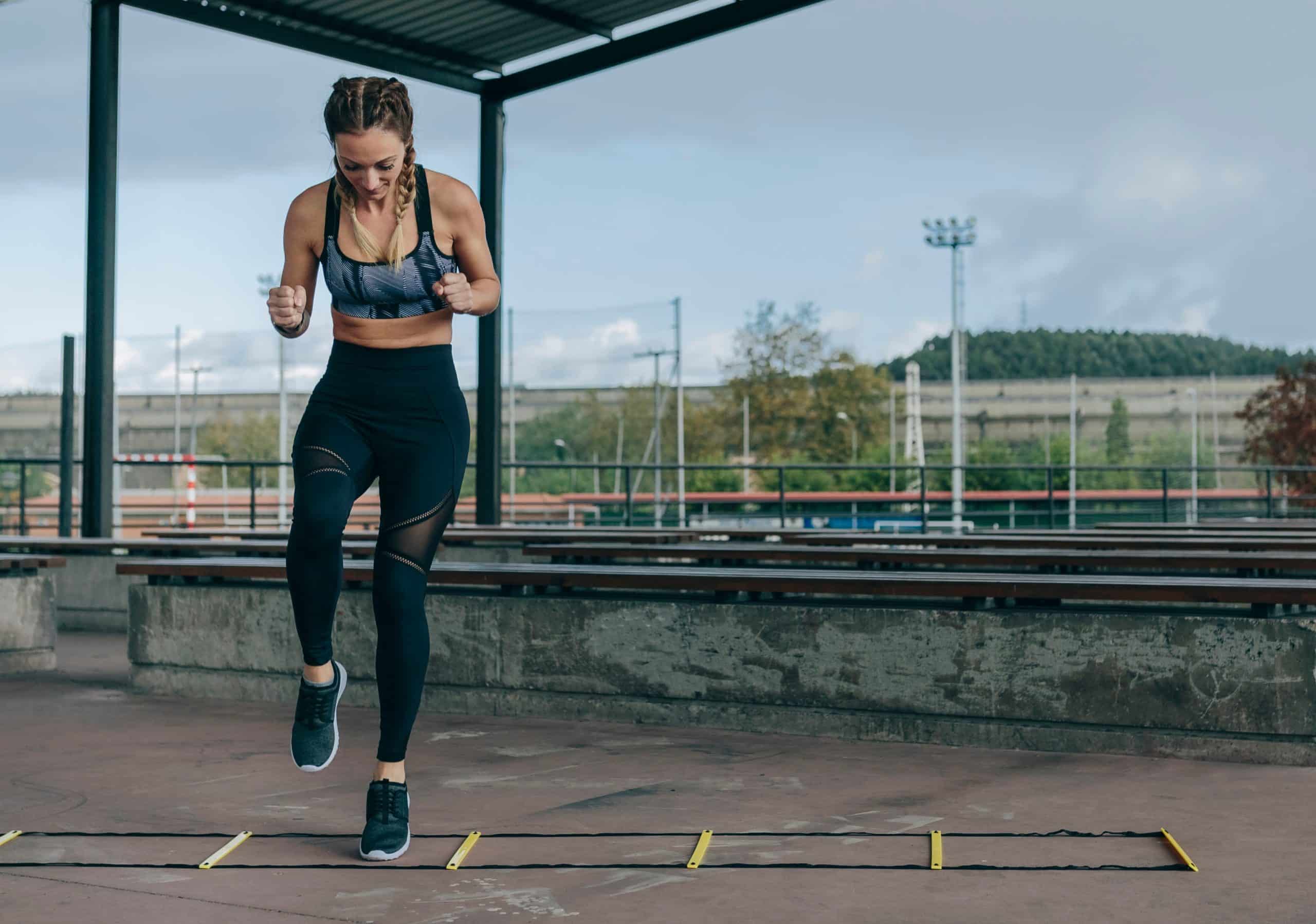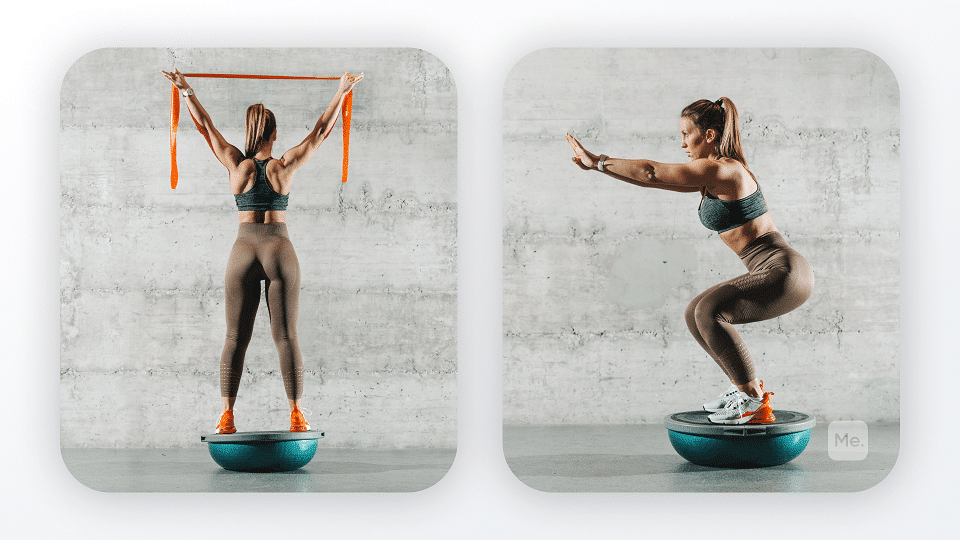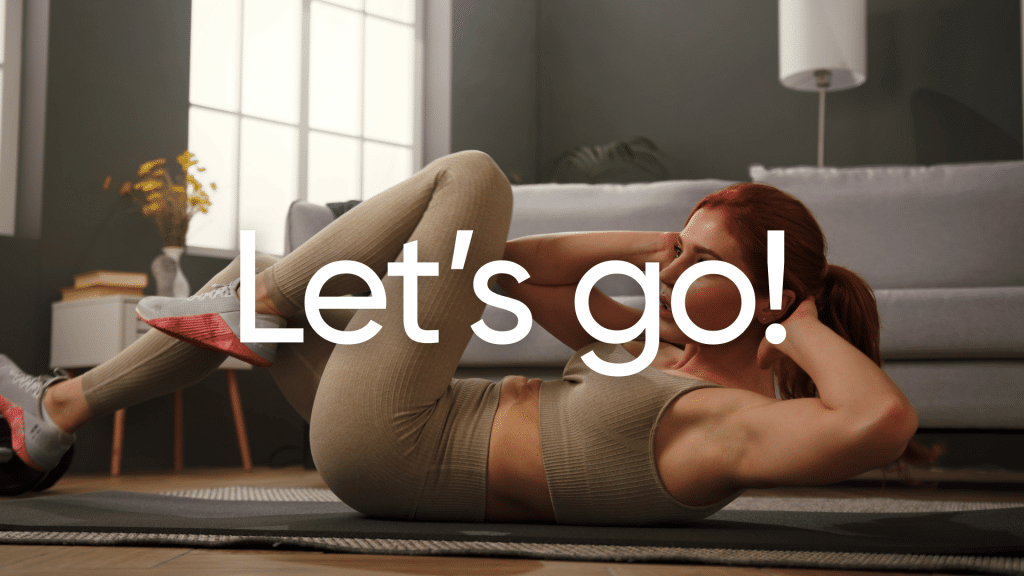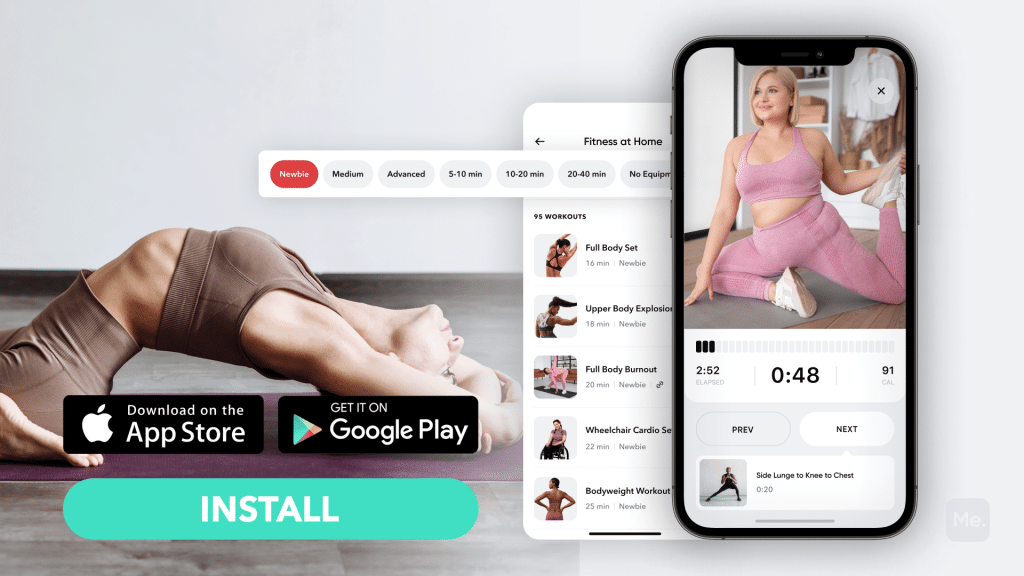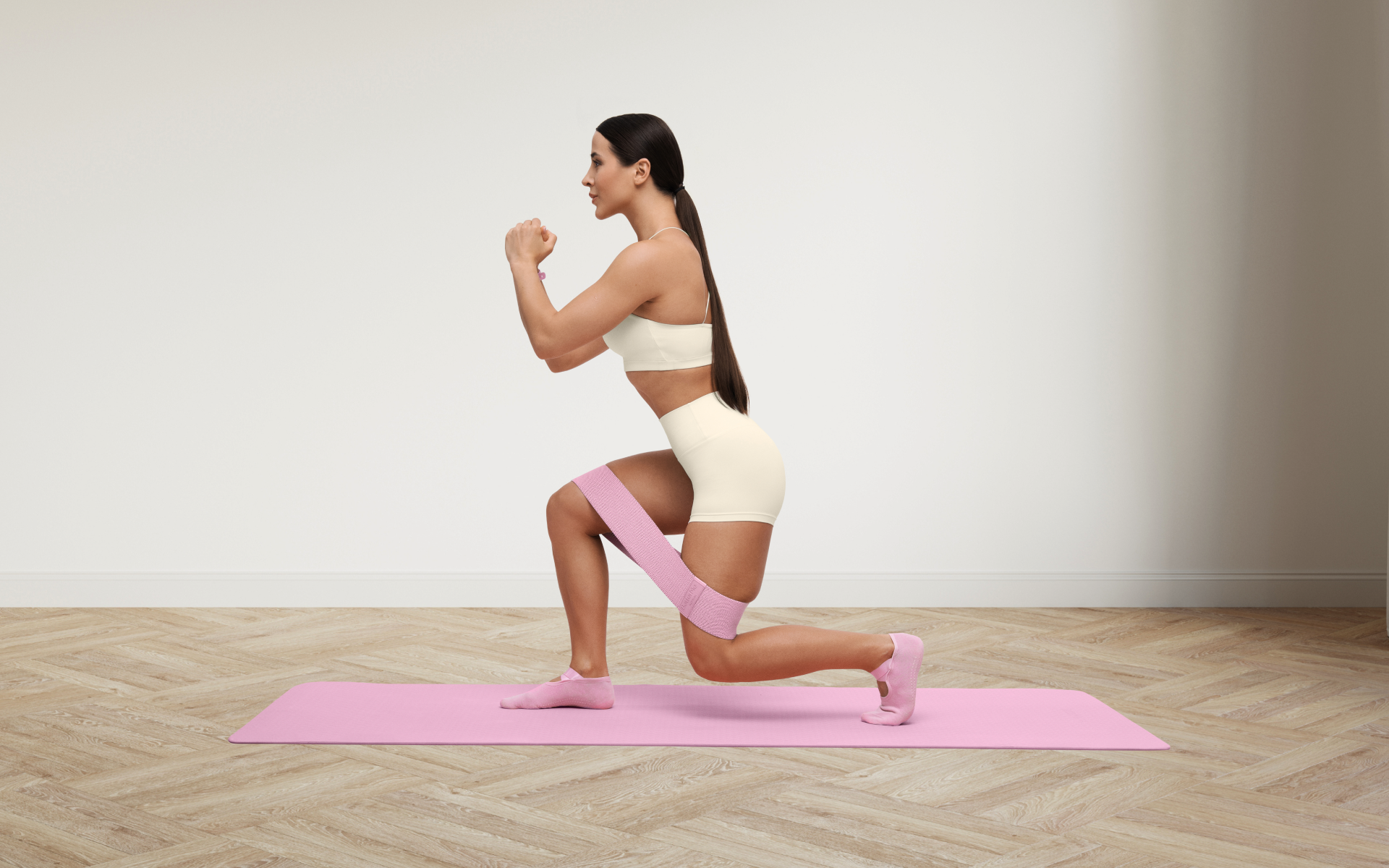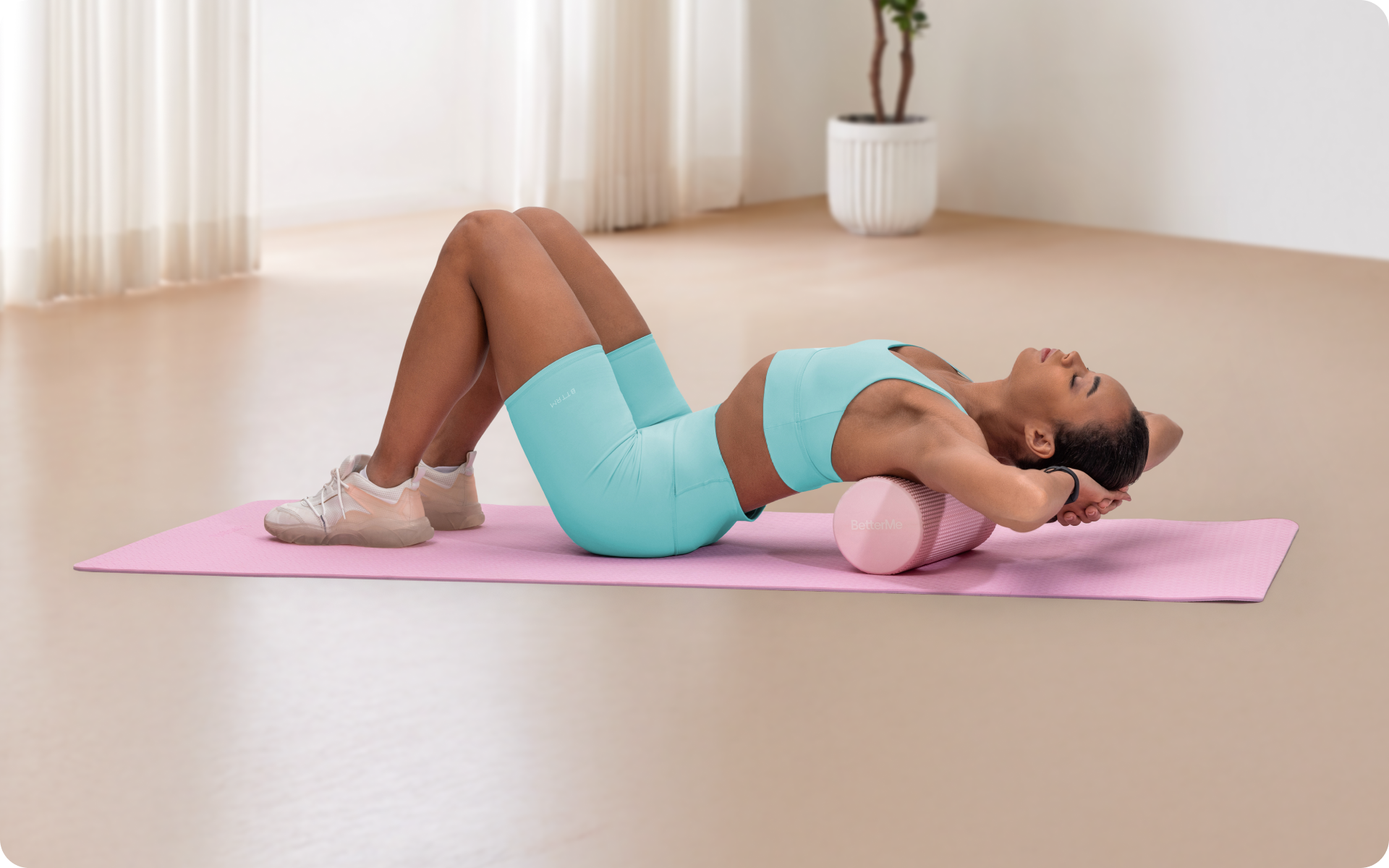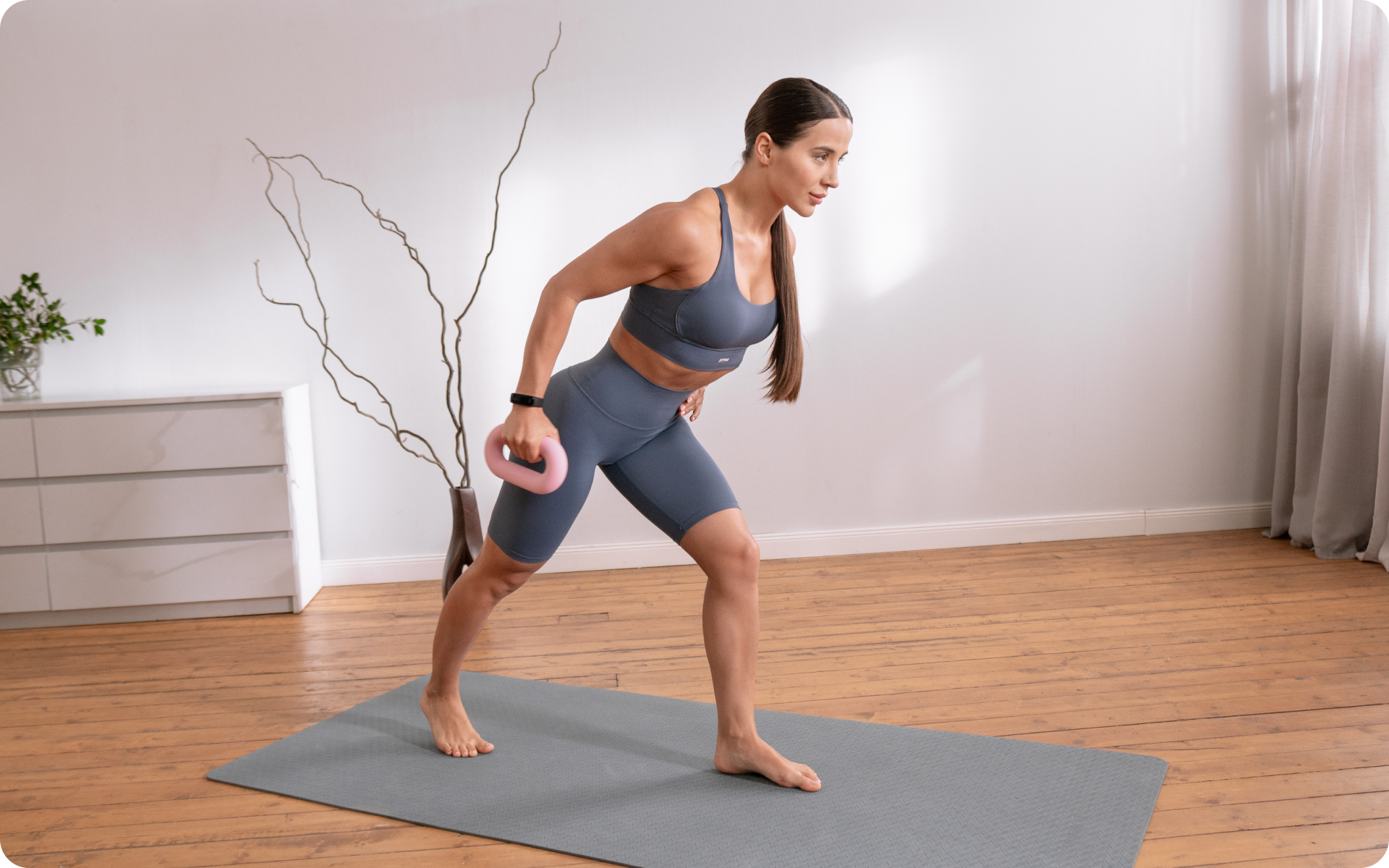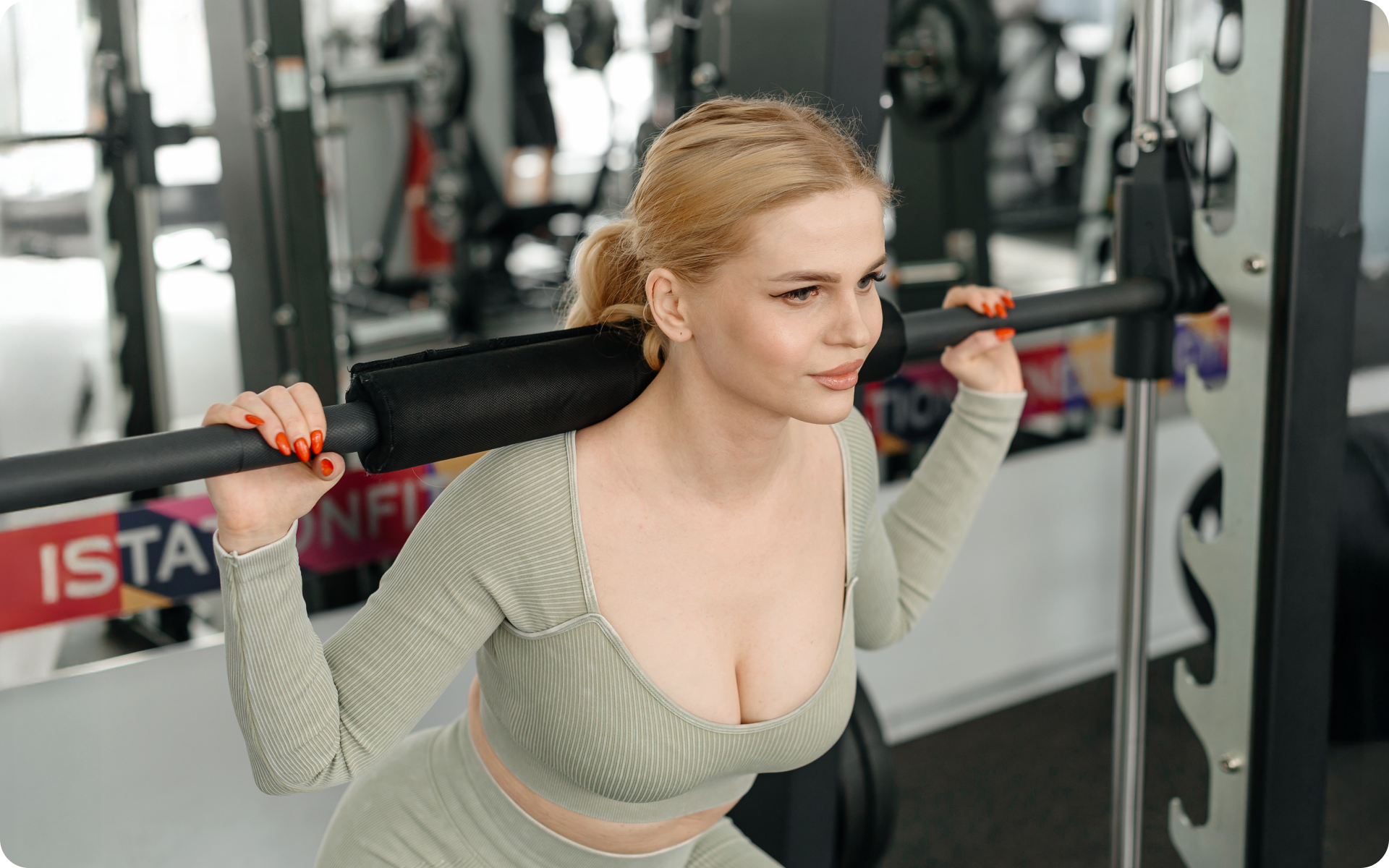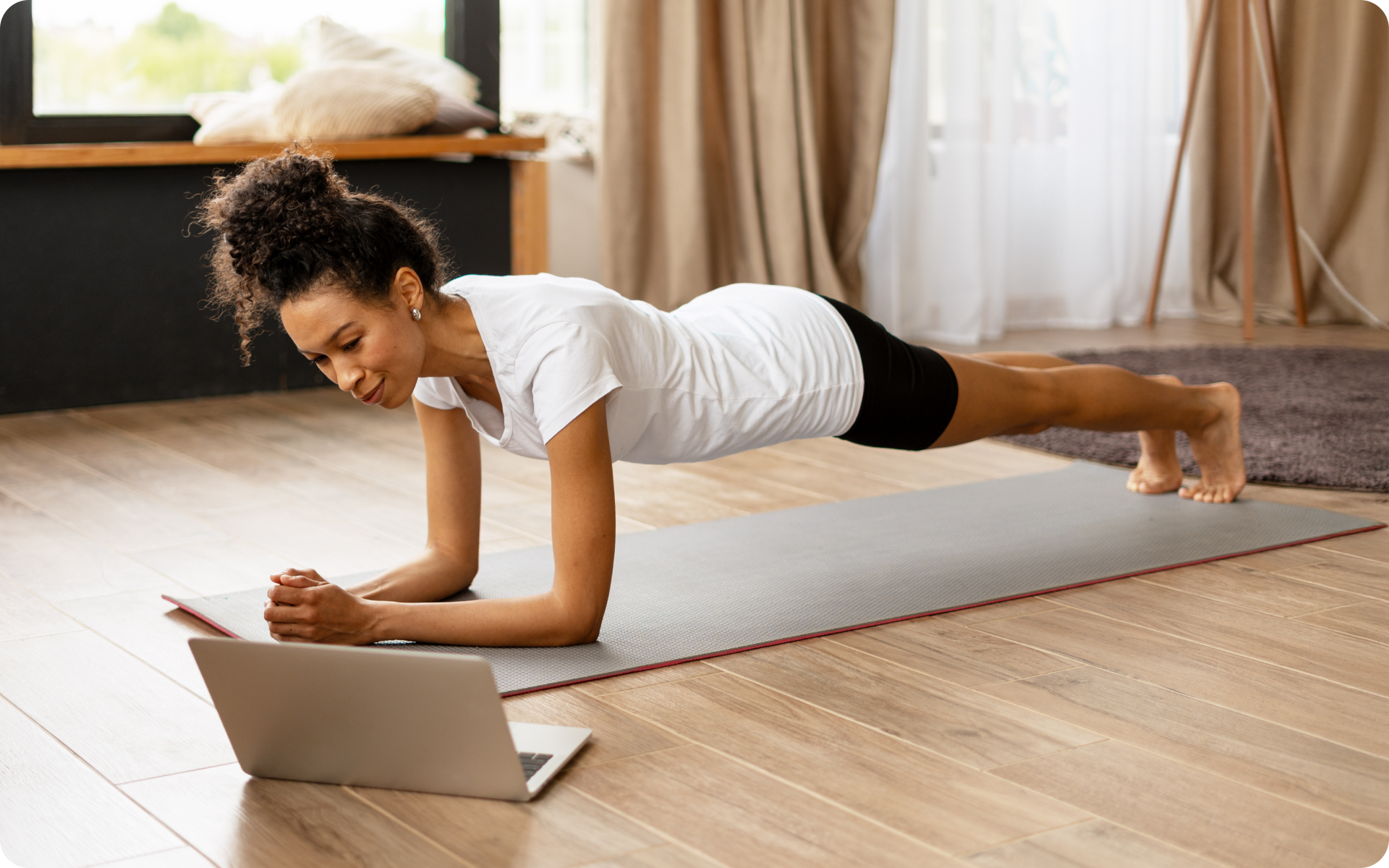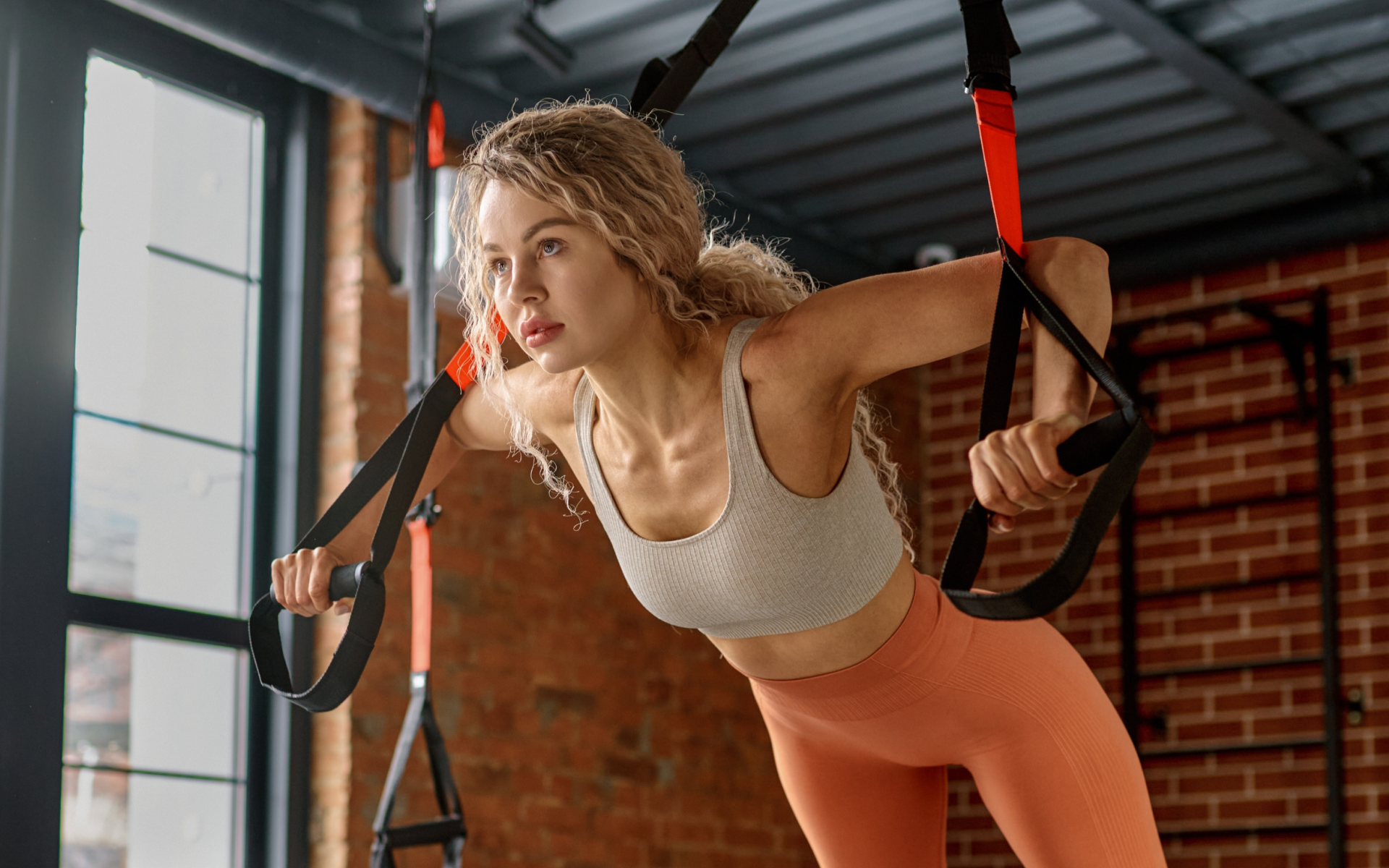When you hear the word “agility,” you might think of professional athletes or dogs chasing a Frisbee. But agility isn’t just for people who are trying to win medals or competitions. Agility training can be beneficial for anyone who wants to improve their balance, coordination, and reaction time. Anyone keen on overall fitness and health can benefit from adding some agility exercises to their workout routine. Here is everything you need to know about agility exercises, including some simple agility drills you can do at home.
What Is Agility?
Agility is the ability to move quickly and change direction effortlessly. It requires good coordination, balance, and speed (7).
Agility is an important quality for day-to-day life. It helps you move around easily and quickly, and can even help prevent you from falling.
For people who lift weights or participate in sports, agility training can help improve performance and prevent injuries (7).
There are many ways to improve your agility. You can do specific exercises to target the qualities that make up agility, such as coordination, balance, and speed.
You can also participate in activities that require you to use these qualities, such as sports or dancing.
How Can I Work On Agility At Home?
Here are some agility exercises that you can do at home to improve your coordination, balance, and speed.
Lateral Plyometric Jumps
Plyometric exercises are a type of exercise that involves quick, powerful movements. They can help improve your explosiveness and power (2).
Lateral plyometric jumps are a good exercise for beginners because they don’t require a lot of coordination.
To do this exercise:
- Start by standing with your feet hip-width apart.
- Swing your arms up and jump to the side, landing on your right foot.
- Immediately jump again to the side, this time landing on your left foot.
- Continue jumping side to side for 30 seconds to 1 minute.
Read More: Wood Chop Exercise Benefits, Muscles Worked, And Variations
Single-Leg Hops
This exercise is a more advanced version of the lateral plyometric jump. It requires a little more coordination but is still a great exercise for beginners.
To do this exercise:
- Start by standing on your left leg with your right leg lifted off the ground.
- Swing your arms up and hop to the side, landing on your left foot.
- Immediately hop again to the side, this time landing on your right foot.
- Continue hopping side to side for 30 seconds to 1 minute.
High Knees
High knees are often overlooked as an agility exercise, but they’re a great way to improve your coordination and speed.
They work by getting your legs moving quickly and challenging your balance.
To do this exercise:
- Start by standing with your feet hip-width apart.
- Drive your right knee up towards your chest, then quickly bring your left knee up towards your chest.
- Continue alternating legs as fast as you can for 30 seconds to 1 minute.
Butt Kickers
Butt kickers focus on the hamstrings (the muscles on the back of your thighs). They’re a great way to improve your coordination and leg speed.
To do this exercise:
- Start by standing with your feet hip-width apart.
- Kick your right heel back towards your butt, then quickly bring your left heel back towards your butt.
- Continue kicking back and forth as fast as you can for 30 seconds to 1 minute.
Skaters
Skaters are a great full-body exercise that challenges your coordination, balance, and leg speed.
To do this exercise:
- Start by standing on your left leg with your right leg lifted behind you.
- Jump to the side, landing on your right foot.
- Immediately jump to the other side, landing on your left foot.
- Continue jumping side to side for 30 seconds to 1 minute.
BetterMe app will provide you with a host of fat-frying fitness routines that’ll scare the extra pounds away and turn your body into a masterpiece! Get your life moving in the right direction with BetterMe!
How Often Should I Do Agility Exercises?
You can do agility exercises every day, but you may want to start with 2-3 days per week. As you get better at the exercises, you can add more days or try more difficult exercises.
Remember to warm up before you start any of these exercises, and to cool down and stretch when you’re finished.
Warm-Up
Before you start your agility workout, it’s important to warm up your muscles. A good warm-up will increase your heart rate and prepare your body for the workout (9).
You can do a simple warm-up like jogging in place or jumping jacks, or you can do a more specific warm-up that targets the muscles you’ll be using.
Here is a quick and easy warm-up routine that you can do before your agility workout:
- Jog in place for 1-2 minutes.
- Do 10 butt kickers.
- Do 10 high knees.
- Do 10 skaters.
- Do 10 lateral plyometric jumps.
- Do 10 single-leg hops.
- Repeat the entire routine 2-3 times.
Read More: Hindu Squats Benefits, Risks, And The Correct Form
Cool-Down
After your agility workout, it’s important to cool down your muscles. A good cool-down will help your body recover and prevent injuries (3).
You can do a simple cool-down like jogging in place or jumping jacks, or you can do a more specific cool-down that targets the muscles you just worked.
Static stretching is a good option for a cool-down because it helps to lengthen your muscles and improve your range of motion (5).
Here is a quick and easy cool-down routine that you can do after your agility workout:
Get into a child’s pose and hold for 30 seconds. This targets your back, hips, and thighs.
- Sit on the ground with your knees bent and your feet together.
- Lean forward, extending your arms in front of you.
- Rest your forehead on the ground and breathe deeply.
- Hold this position for 30 seconds.
- Repeat
Other stretches that you can do for your cool-down include:
-
Hamstring Stretch
- Lie on your back with one leg extended straight in front of you and the other leg bent with your foot flat on the ground.
- Reach for your straight leg and hold for 30 seconds.
- Repeat with the other leg.
-
Quadriceps Stretch
- Stand with your feet together and bend one leg behind you, grabbing your foot with your hand.
- Hold for 30 seconds.
- Repeat with the other leg.
-
Calf Stretch
- Place your hands on a wall and step back with one leg, keeping the heel of your back leg flat on the ground.
- Bend your front leg and lean into the wall, feeling a stretch in your calf.
- Hold for 30 seconds.
- Repeat with the other leg.
-
Hip Flexor Stretch
- Kneel on one leg with the other leg extended straight in front of you.
- Lean forward, keeping your back straight, and hold for 30 seconds.
- Repeat with the other leg.
Betterme will keep you laser-focused on your weight loss journey! Nutrient-packed meal plans, fat-blasting workouts, galvanizing challenges and much more. Try using the app and see for yourself!
What Are The Benefits Of Agility Exercises?
Agility training sets apart average athletes from exceptional athletes. It offers the following benefits:
Greater Explosive Power
Agility training helps develop greater explosive power, which is the ability to generate maximum force in a short period (10). This is an important quality for athletes who need to accelerate quickly, like sprinters and football players.
Improved Coordination
Agility exercises challenge your coordination and balance, which can help you become a better athlete overall (1). This is because agility training requires you to use your whole body to move in different directions quickly and efficiently.
Injury Prevention
Agility training can help prevent injuries by strengthening the muscles and joints around your knees, ankles, and hips (12). This extra support can help to stabilize your joints and protect them from impact.
Improved Reaction Time
Agility training can help improve your reaction time. This is the ability to see or hear a stimulus and respond to it quickly (8). This is an important quality for athletes who need to react quickly to their opponents, like tennis players and basketball players.
Improved Cardiovascular Health
Agility training is a form of cardiovascular exercise, which means that it helps to strengthen your heart and lungs. This type of exercise can help to improve your overall cardiovascular health (6).
Improved Mental Health
Agility training can also improve your mental health. This is because exercise releases endorphins, which are hormones that have mood-boosting effects. Exercise can also help reduce stress and anxiety levels (4).
How To Incorporate Agility Exercises Into Your Workout
Agility exercises are a great way to add variety to your workout routine. There are many different ways that you can incorporate agility training into your workouts.
As A Warm Up
You can do agility drills as a warm-up before your main workout. This will help to increase your heart rate and prepare your body for the workout ahead.
In Between Sets
If you’re weightlifting, you can do agility drills in between sets. This will help to keep your heart rate up and avoid any lulls in your workout.
As A Workout
You can also do agility drills as your main workout. This is a great way to get a full-body workout and improve your cardiovascular health.
How To Perform Agility Exercises Safely At Home
Both beginners and experienced athletes can benefit from agility training. However, it’s important to perform agility exercises safely to avoid injury. Here are a few tips:
Start Slow
If you’re new to agility training, start slow and gradually increase the intensity of your workouts. This will help your body to adjust to the new movements and prevent any injuries.
Wear The Right Shoes
Wear supportive, comfortable shoes when you do agility drills. This will help to protect your feet and ankles from impact.
You want shoes that are lightweight and have good traction. You may also want to consider wearing shoes with lateral support if you have any existing knee or ankle injuries (11).
Use The Right Surface
Use a flat, level surface when you do agility drills. This will help to prevent any trips or falls. Avoid doing agility drills on grass or sand, as these surfaces can be uneven and make it more difficult to maintain your balance.
Warm Up First
Always warm up before you start your agility drills. A light jog or dynamic stretching are both good options for warming up. Warming up will help to prepare your body for the workout ahead and reduce your risk of injury (13).
Check Your Form
Generally, proper form is more important than speed when you’re doing agility drills. Make sure that you’re using the correct form for each drill to avoid any injuries.
Some signs that you’re using improper form include:
- You feel pain in your joints or muscles
- You feel unsteady or unbalanced
- You can’t control your movement
- You’re not moving as fast as you should be
If you’re unsure of the correct form for an agility drill, ask a certified personal trainer or coach for help. They will be able to provide you with guidance and ensure that you’re using the correct form.
Listen To Your Body
It’s normal to feel some muscle soreness after doing agility drills. However, you should stop if you feel pain in your joints or muscles. Continuing to exercise through the pain can lead to further injury.
The Bottom Line
Agility training is a great way to improve your reaction time, cardiovascular health, and mental health. There are many different ways that you can incorporate agility exercises into your workout routine. However, it’s important to perform these exercises safely to avoid injury.
DISCLAIMER:
This article is intended for general informational purposes only and does not serve to address individual circumstances. It is not a substitute for professional advice or help and should not be relied on for making any kind of decision-making. Any action taken as a direct or indirect result of the information in this article is entirely at your own risk and is your sole responsibility.
BetterMe, its content staff, and its medical advisors accept no responsibility for inaccuracies, errors, misstatements, inconsistencies, or omissions and specifically disclaim any liability, loss or risk, personal, professional or otherwise, which may be incurred as a consequence, directly or indirectly, of the use and/or application of any content.
You should always seek the advice of your physician or other qualified health provider with any questions you may have regarding a medical condition or your specific situation. Never disregard professional medical advice or delay seeking it because of BetterMe content. If you suspect or think you may have a medical emergency, call your doctor.
SOURCES:
- Combination of Agility and Plyometric Training Provides Similar Training Benefits as Combined Balance and Plyometric Training in Young Soccer Players (2018, frontiersin.org)
- CURRENT CONCEPTS OF PLYOMETRIC EXERCISE (2015, ncbi.nlm.nih.gov)
- Do We Need a Cool-Down After Exercise? A Narrative Review of the Psychophysiological Effects and the Effects on Performance, Injuries and the Long-Term Adaptive Response (2018, link.springer.com)
- Effects of Exercise and Physical Activity on Anxiety (2013, frontiersin.org)
- Effects of Static Stretching With High-Intensity and Short-Duration or Low-Intensity and Long-Duration on Range of Motion and Muscle Stiffness (2020, frontiersin.org)
- Exercise and Cardiovascular Health (2003, ahajournals.org)
- It’s Time to Change Direction on Agility Research: a Call to Action (2021, springeropen.com)
- The Effect of Agility Training on Reaction Time in Fencers (2020, ccsenet.org)
- The effect of warm-ups with stretching on the isokinetic moments of collegiate men (2018, ncbi.nlm.nih.gov)
- The Effects of a 6-Week Plyometric Training Program on Agility (2006, ncbi.nlm.nih.gov)
- The role of shoes in the prevention of ankle sprains (1985, pubmed.ncbi.nlm.nih.gov)
- Thigh Muscle Activity, Knee Motion, and Impact Force During Side-Step Pivoting in Agility-Trained Female Basketball Players (2009, ncbi.nlm.nih.gov)
- Warming-up and stretching for improved physical performance and prevention of sports-related injuries (1985, pubmed.ncbi.nlm.nih.gov)
